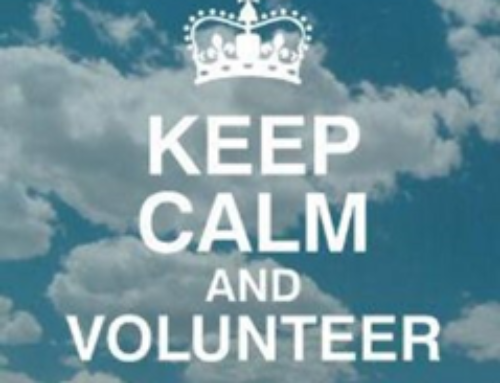 Guest Post by C.A. Newberry
Guest Post by C.A. Newberry
Every time you try to reach out, do you end up frustrated and feel like quoting “Cool Hand Luke?” Well, I’m sure you aren’t the first, and I can guarantee you won’t be the last.
Communication in general can be a very complicated topic. Is it external? Internal? Are we reaching our audience? Did we send the right message? And so on.
Your company culture matters, and how you communicate within the workplace is a vital piece of the puzzle when putting it all together.
How should we communicate within today’s multigenerational workplace?
If we look at the math, when we reach the year 2020 we could easily be dealing with up to five different generations in the workplace. As I’ve said before, every generation seems to be stuck with its own set of stereotypes. And we sometimes focus on this distinction way too often.
However, these sweeping generalities exist because, in certain cases, they are rooted in reality. So maybe we should be paying more attention to what’s working or not working when it comes to communicating with our multigenerational workforce.
It’s been said that Baby Boomers prefer to communicate face-to-face or with a phone call. However, if it’s after business hours try reaching them through e-mail, unless of course it’s an emergency; then it’s acceptable to grab for the phone.
Also documented is the fact they are not keen on negative feedback. So if you need to perform a review or an evaluation with a Baby Boomer, don’t just hand them a piece of paper or send them an e-mail.
Baby Boomers would prefer a formal meeting, with positive dialogue, about expectations moving forward.
The Generation X gang is supposedly seeking out immediate satisfaction, and speaking to them in shorter sound bites is not out of the question. Constant feedback is preferred; it is said, “don’t beat around the bush, get to the point with this group.”
Gen X’ers are digital immigrants who have come to love their cellphones, feeling the need to be connected to all their peers at a moment’s notice. They also like instant messaging, but shy away from organized meetings and phone calls. They are constantly seeking out ideas for efficiency.
Those Gen X’ers are on a quest for a superior balance between work and home life.
The Millennials, as should be no surprise, are completely accustomed to social media and text messaging, and rely on them as their main forms of communication. They too, perhaps even more so than Gen X, are tethered to their cell phones and are in constant contact with everyone.
This group likes to accomplish work in group meetings, where their priority is to exchange ideas and divvy up the work load. If you’re using action words and issuing challenges, you’re probably singing the right tune for this group (just don’t talk down to them). Use some humor, encourage them to take risks.
When it comes to Millennials, look, maybe even bend the rules a little, and let them explore a new way to soak in some education.
Three tips to improve your communications
I don’t think I’m sharing breaking news here, but people can easily misunderstand one another.
We all have a tendency to make some simple assumptions that can lead to potential trouble, and it doesn’t matter which generation you belong to (or identify with).
Have any of you been guilty of thinking that communication just comes naturally? That you’ve either got the right stuff or you just don’t? Let’s throw that out the window.
#1: Communication is a skill that can be honed over time. Take a class or join a local Toastmasters group. Seek out opportunities to practice.
I’m sure many of you have thought, “If I just say it, I will be understood.” That is, if you’ve even thought about how your words are heard.
But perception on the part of the receiver is an important factor. Just because a thought was communicated out loud, does not mean that the message was actually understood.
#2: Always ensure your message is clear, and understood as intended.
I’m going to plead guilty on this last one: “More is better.” When it comes to ice cream, yes. When we’re talking communication, no. It’s easy to keep talking when we feel misunderstood, but it can also add a new layer of complication to the process.
#3: Knowing when to be silent is golden.
The takeaway here is to understand the importance of diversifying our communication styles and sharing messages in more than one way. We need to not only focus on the message and what needs to be accomplished, but also accommodate the different learning styles of our individual co-workers no matter what generation they may be from.
Image: aturkus via Flickr, CC 2.0
 C.A. Newberry, a retired communications & events coordinator, has a passion for continued learning. She spent years advising small businesses and mentoring youth in her community. If she is not at her computer, you can find her at the ballpark with her family. Connect with her on Twitter.
C.A. Newberry, a retired communications & events coordinator, has a passion for continued learning. She spent years advising small businesses and mentoring youth in her community. If she is not at her computer, you can find her at the ballpark with her family. Connect with her on Twitter.









[…] In a recent article I authored, I discussed the importance of diversifying our communication styles and sharing our message in multiple ways. International or cross cultural communication is no different; do a little research and find out about whom you are speaking to. […]
ronsela leaderswest RenildeDeWit Thanks so much for sharing CANewberry10 guest #WUL post!
SamanthaStauf I tend to agree with your thoughts! E-mail “situations” can certainly turn into a comedy or a tragedy! Taking the temperature of your group and figuring out what works best is usually key.
Lots of good stuff here. I do think that the vast majority of people don’t take email reprimands too well. Its akin to throwing a bomb in the water. Its far better, and more efficient, to have a meeting about any problem areas rather than sending an unemotional email that might come across as an attack.
Can’t tell you how many times an group “what the hell happened here” email turned into a 45 minute angst fest. This is how it usually goes: four people type their explanations in sync. One person sends off the email. The rest of the group pause to read the first email. Then they need to go back to their own email and delete everything because the first person covered what they planned to say. Lather. Rinse. Repeat. For 45 minutes. And the email doesn’t settle anything, so the group spends the rest of the day distracted, pissed, and upset. Not an ideal work day.